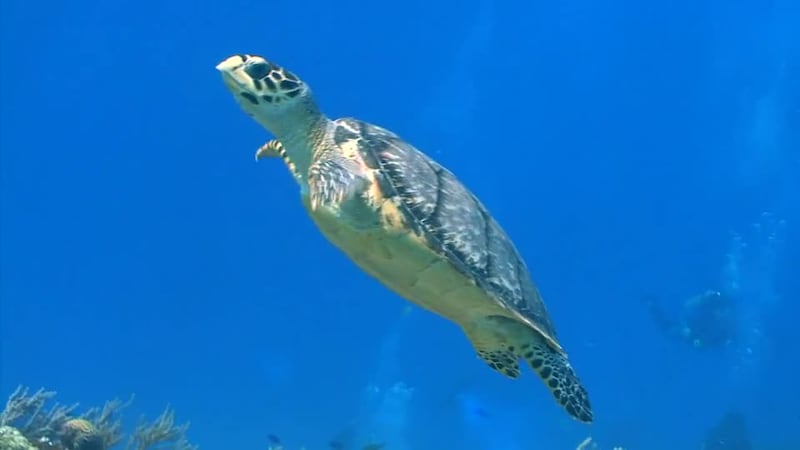VOLUSIA COUNTY, Fla. — Sea turtle nesting season started May 1, and with water temperatures warming up, hundreds of sea turtles will be making their way to the beach to lay their eggs over the next few months.
Volusia County beaches have already seen three leatherback nests, one of which was discovered on April 2, and is the earliest recorded sea turtle nest on county beaches.
>>> STREAM CHANNEL 9 EYEWITNESS NEWS LIVE <<<
Sea turtle eggs incubate for about two months before the hatchling breaks free and make the often treacherous trek to the ocean, dodging predators, holes, trash and beach furniture.
Others will never make it to the ocean because they will be led into harm’s way by artificial beachfront lighting.
“We want to make Volusia County beaches safe, inviting places for humans and sea turtles,” said Ryan Chabot, manager of Volusia County’s sea turtle Habitat Conservation Plan. “We encourage residents and visitors alike to respect our wildlife. Let the night provide the light and keep our beaches clean, dark and flat.”
It is estimated that only about one in 1,000 to 10,000 hatchlings will make it safely to sexual maturity, which may take 10 to 25 years.
Read: Gov. DeSantis pledges $30 million to help save Florida manatees
“Artificial lighting is a human-made threat we can correct with minimal effort,” he added. “Bright lights can discourage adult female sea turtles from nesting and confuse hatchlings, leading them away from the ocean and into streets or storm drains. By simply redirecting lights away from the beach and turning them off when not in use, beachfront residents can allow natural moonlight and starlight to guide nesting females and hatchlings and keep them out of danger.”
During the nesting season, oceanfront property owners are required to shield, redirect or turn off lights so they do not shine on the beach.
Volusia County’s Environmental Management Division works with beachfront property owners throughout the year, educating them about the sea turtle lighting ordinance.
Read: Crews begin to demolish 7-Eleven near Lake Eola to build green space
Here are tips that can help save sea turtle lives:
· Do not touch or disturb sea turtles or their nests.
· Do not disturb the dune system or plants.
· Do not walk on the dunes.
· When driving at the beach, use the designated traffic lanes and parking areas.
· Do not use flash photography at night.
· Do not use cell phones to light your way at night.
· Use only red LED flashlights; they are less visible to turtle eyes.
· After a day at the beach, flatten sandcastles, fill in holes and take your chairs and equipment with you.
· Dispose of trash and recyclables in proper receptacles.
· Do not use fireworks.
Read: New land speed record set by autonomous Indy race car at Kennedy Space Center
If you see a nesting adult sea turtle or hatchlings making their way to the ocean, admire them from a safe distance. Stand far away, remain calm and quietly enjoy this special experience.
If a turtle appears to be in immediate danger, notify a lifeguard or Beach Safety officer or call the Florida Fish and Wildlife Conservation Commission at 888-404-3922.
Sea turtle nesting season runs through Oct. 31.
During a typical year, 400 to 500 nests are laid in Volusia County. Last year’s season was the fourth-highest nesting season on record, with 780 nests counted.
Read: Rockin’ Robinson returns to the Milk District after a 2-year hiatus
For more information about Volusia County’s sea turtle program, call 386-238-4668 or visit www.volusiaseaturtles.org.
For questions about sea turtle-friendly lighting, call 386-238-4773.
Click here to download the free WFTV news and weather apps, click here to download the WFTV Now app for your smart TV and click here to stream Channel 9 Eyewitness News live.
©2022 Cox Media Group















